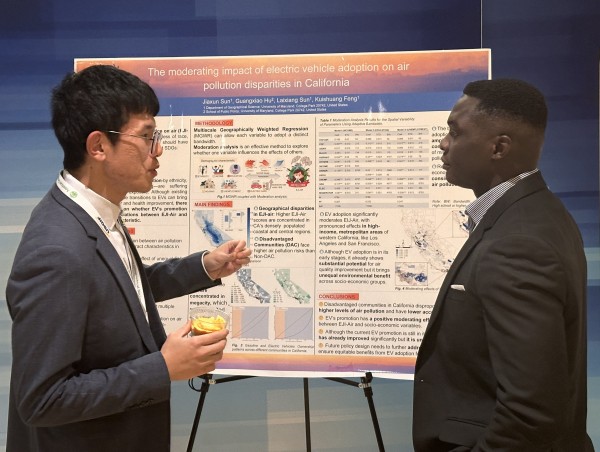GEOG Research Boosts the Role of Remote Sensing in the Implementation of Climate Change Agreements
PhD candidate, Pui-Yu Ling, along with Drs. Giovanni Baiocchi and Chengquan Huang, developed a model framework that combines remote sensing data on forest disturbance, and forest inventory data on timber production, to produce improved estimates of carbon stored in forests and to broaden the reach of carbon accounting to include carbon stored in timber products. Their research published in Climatic Change, an interdisciplinary and international journal focusing on the science of climate change, can help countries to fulfill the carbon accounting commitments pledged in current and future climate mitigation agreements, particularly from the forthcoming Paris Climate Conference in December and consequent implementation efforts.
The findings are published in the Journal of Climatic Change: http://link.springer.com/article/10.1007/s10584-015-1510-3?wt_mc=internal.event.1.SEM.ArticleAuthorOnlineFirst
Figure 2: Time series of carbon in roundwood, with contribution from different types, 1986-2009, by ecoregion. Red tick marks on the x-axis indicate the years when the TPO data are available. Error bars represent 95% confidence interval for the total estimated carbon content. Average percentage change per year of carbon influx to HWP, +- margin of error, for each ecoregion were as follows: NCP: -1.09 +- .64%/year; SCP: -1.06 +-.43%/year; Piedmont: -1.77+-.60%/year; Mountain: -1.79+-.50%/year. The Forest Service divides North Carolina into four regions: Northern Coastal Plain (NCP), Southern Coastal Plain (SCP), Piedmont and Mountain. Tydes of roundwood are: HS=Hardwood Sawlog; HP=Hardwood Pulpwood; HF=Hardwood Fuelwood; SS=Softwood Sawlog; SP=Softwood Pulpwood; SF=Softwood Fuelwood. Plots are generated using the ggplot2 package in R.
Published on Tue, 10/27/2015 - 15:50


